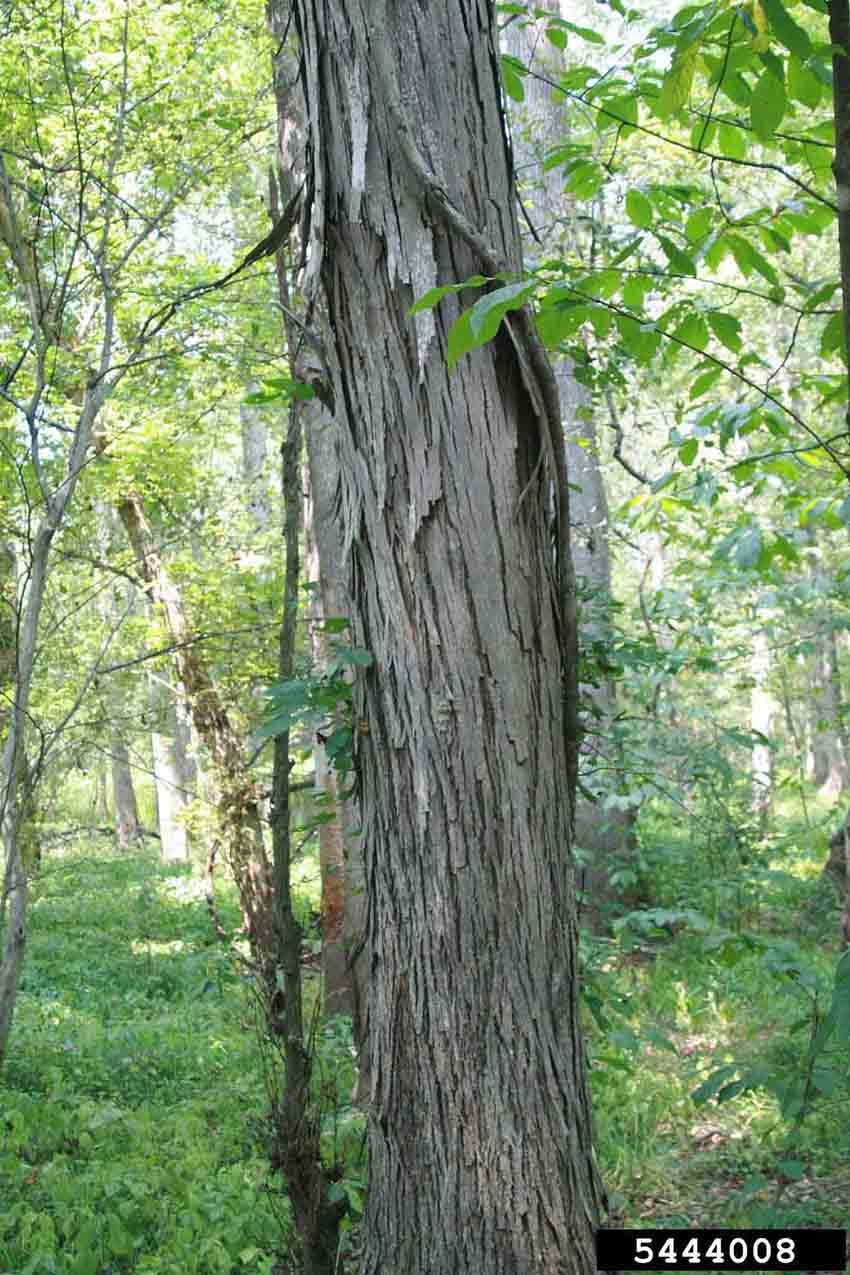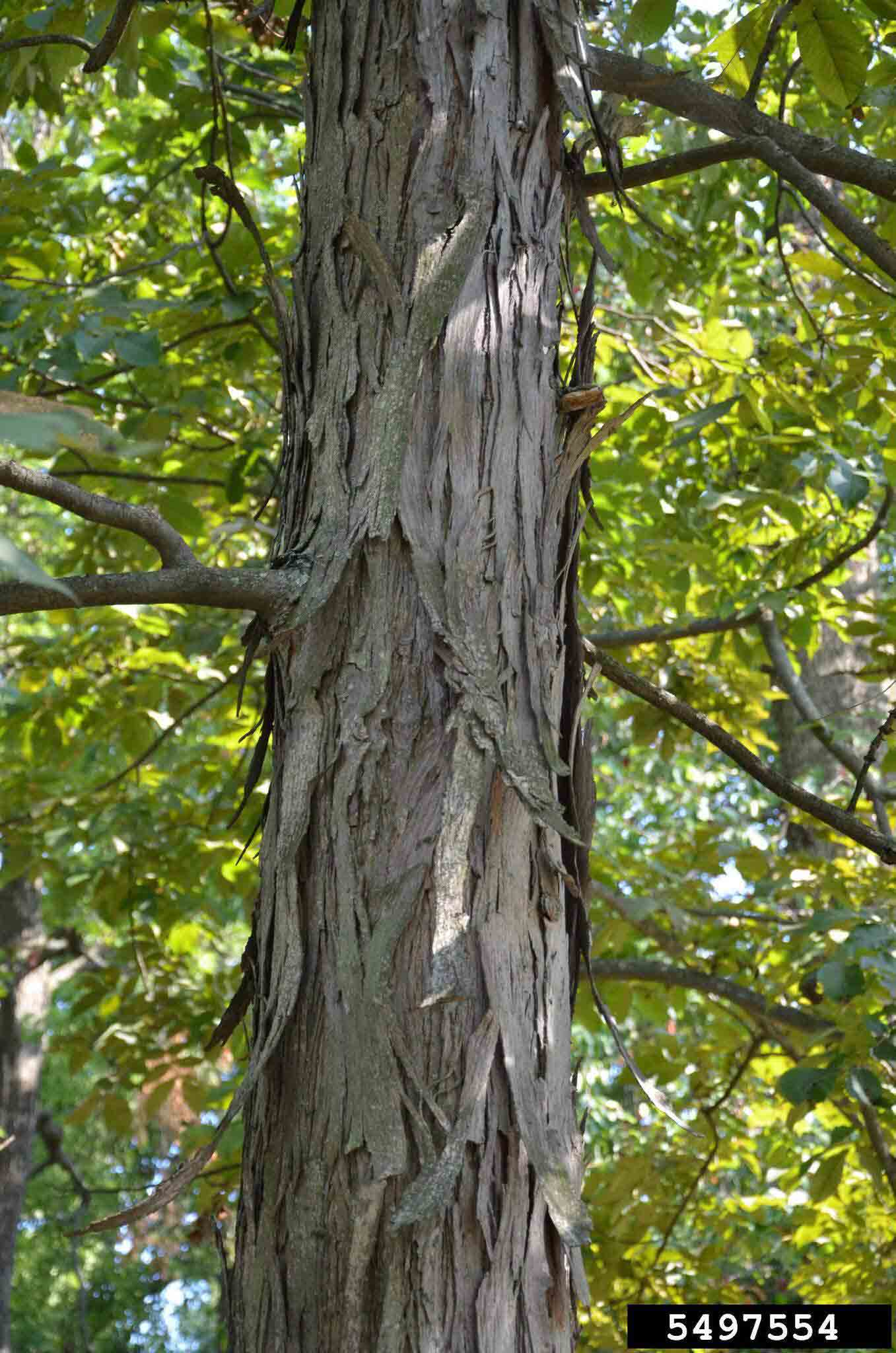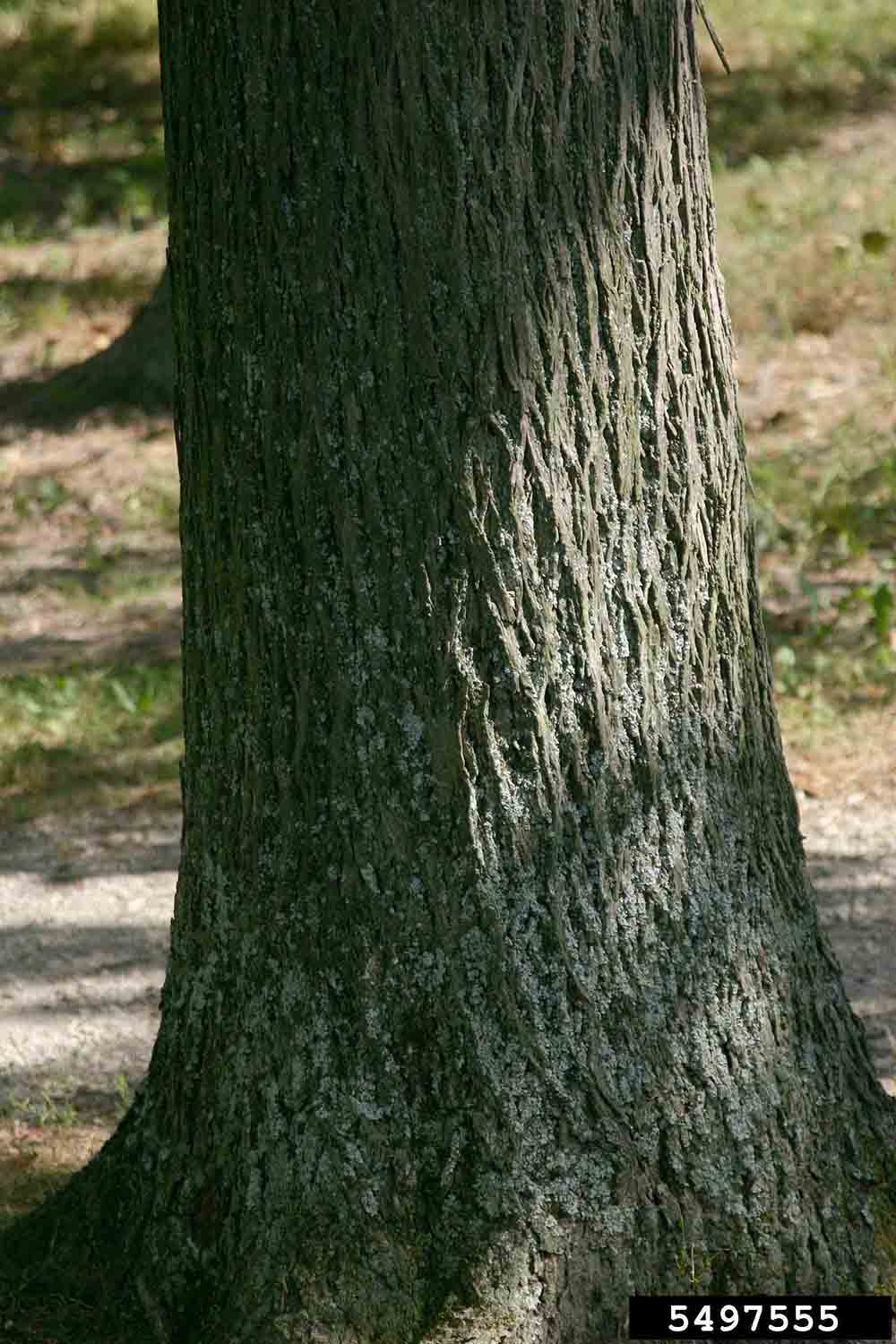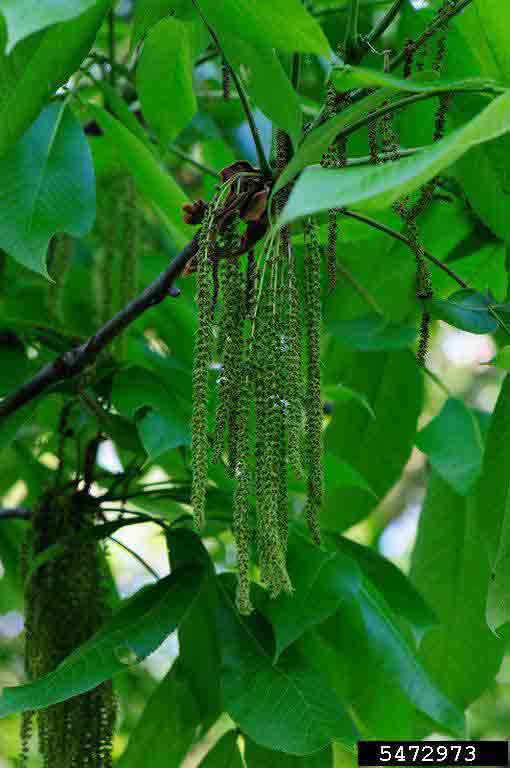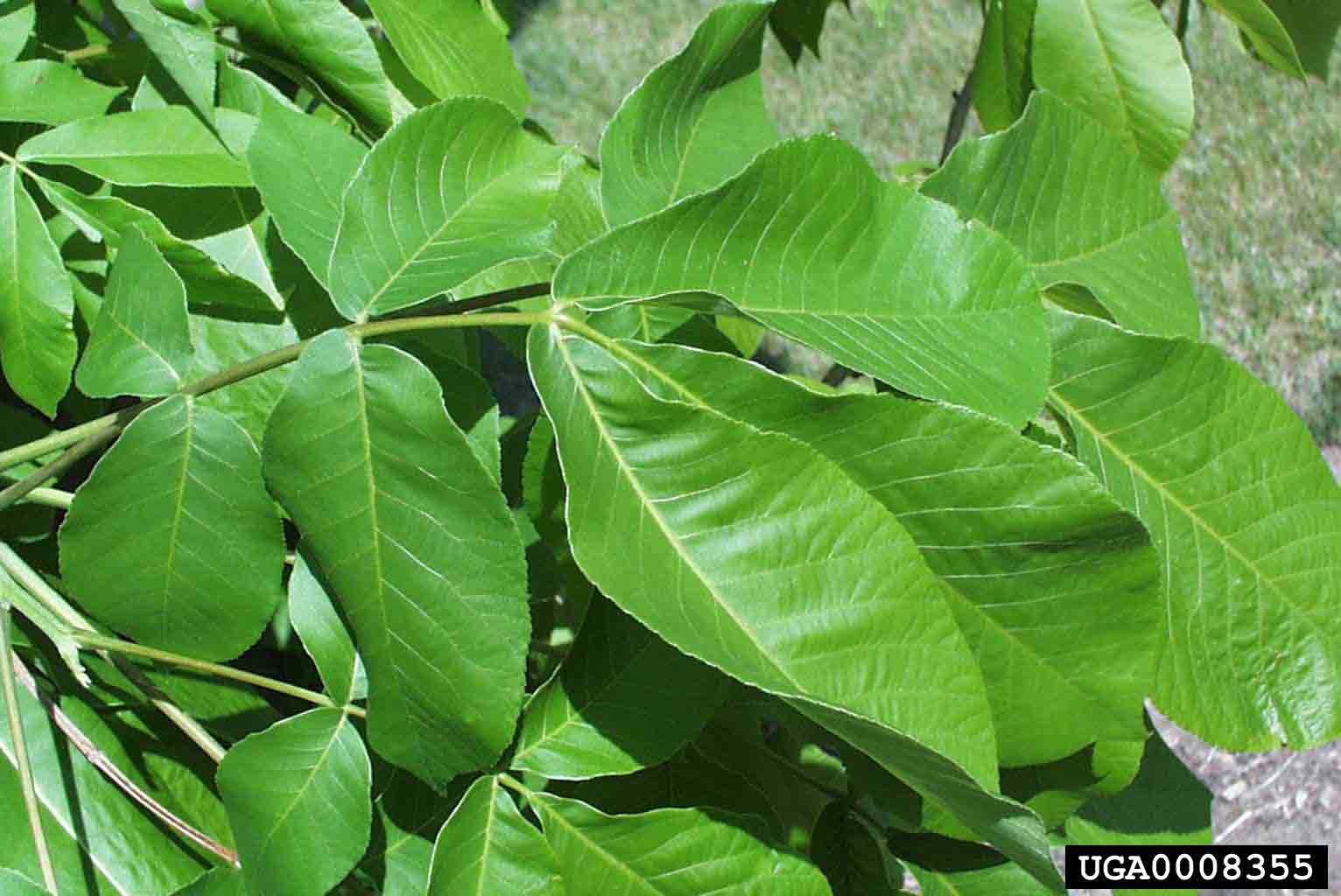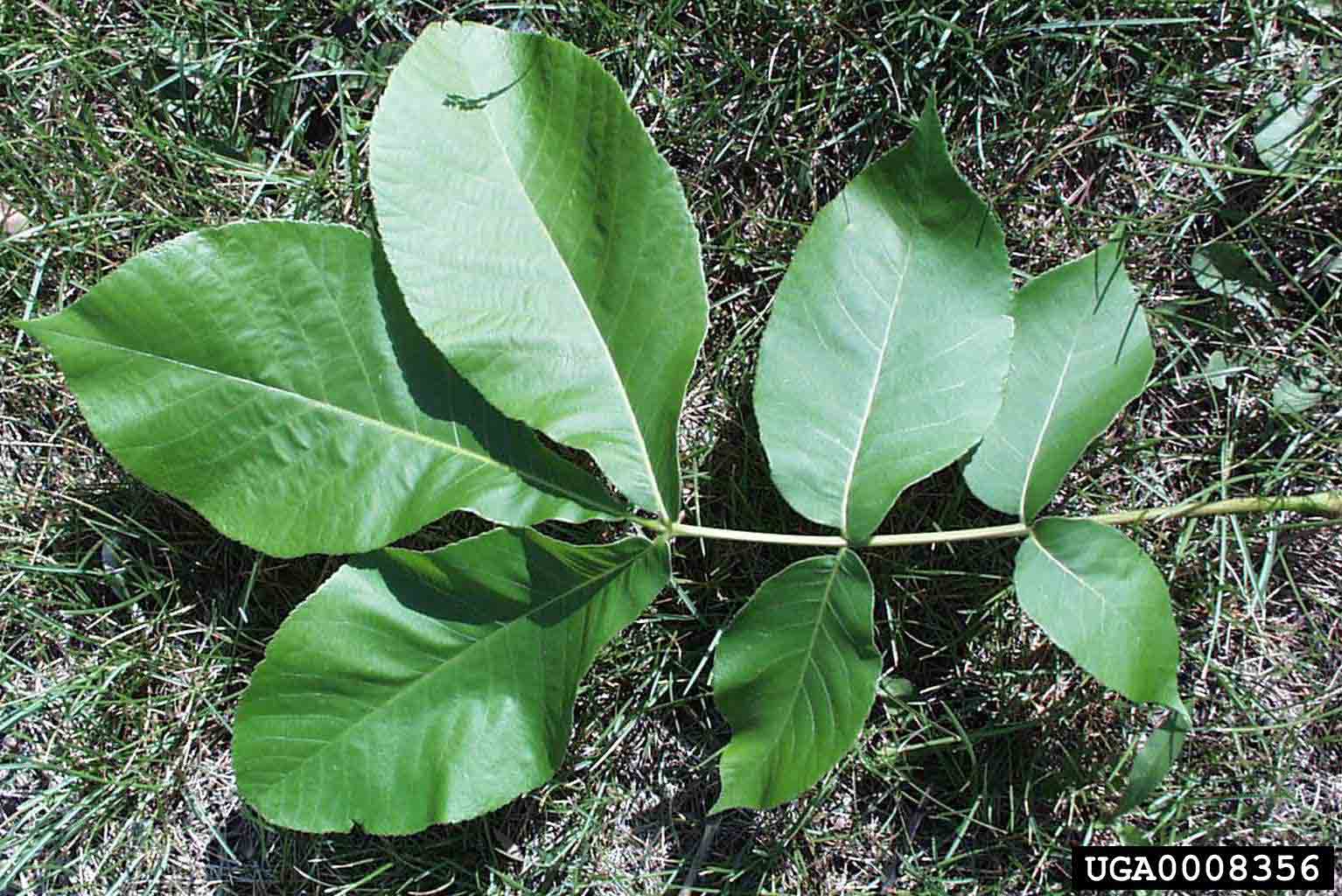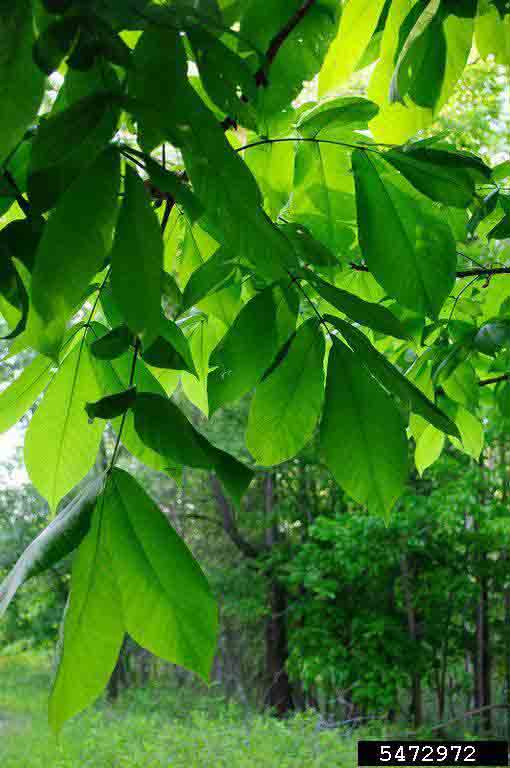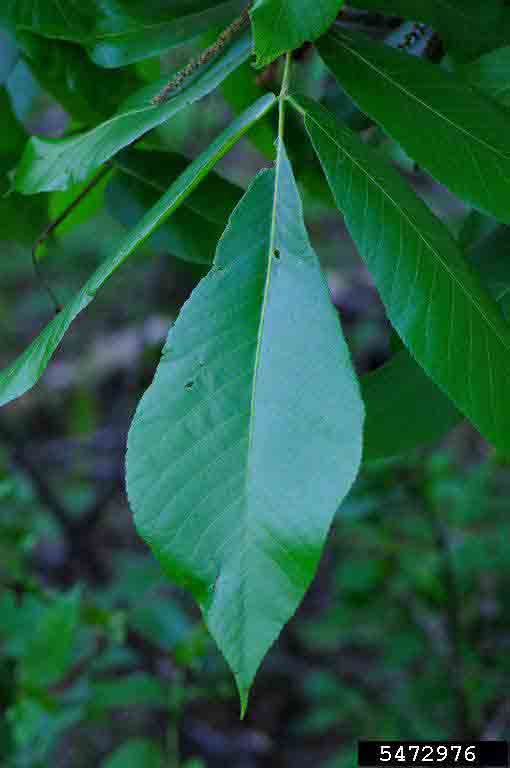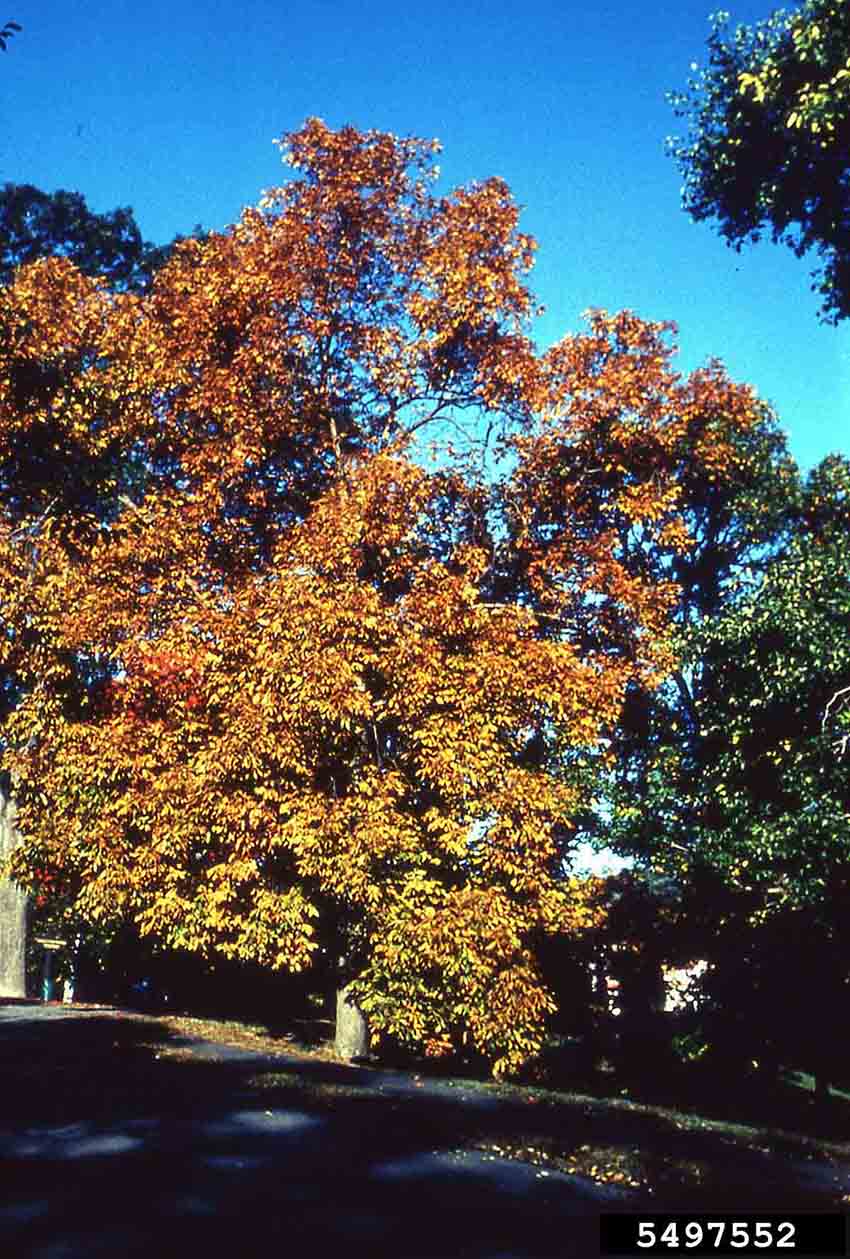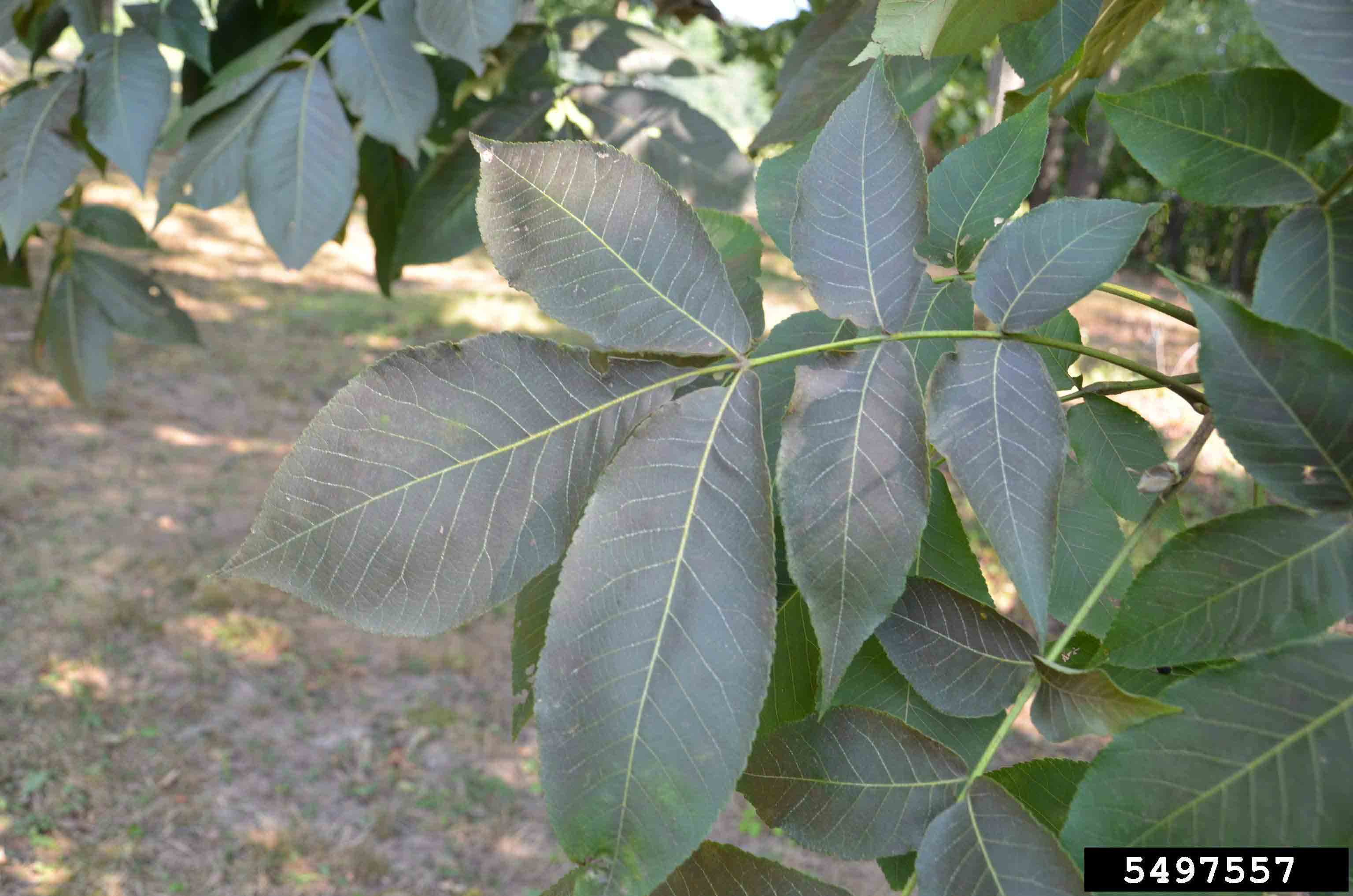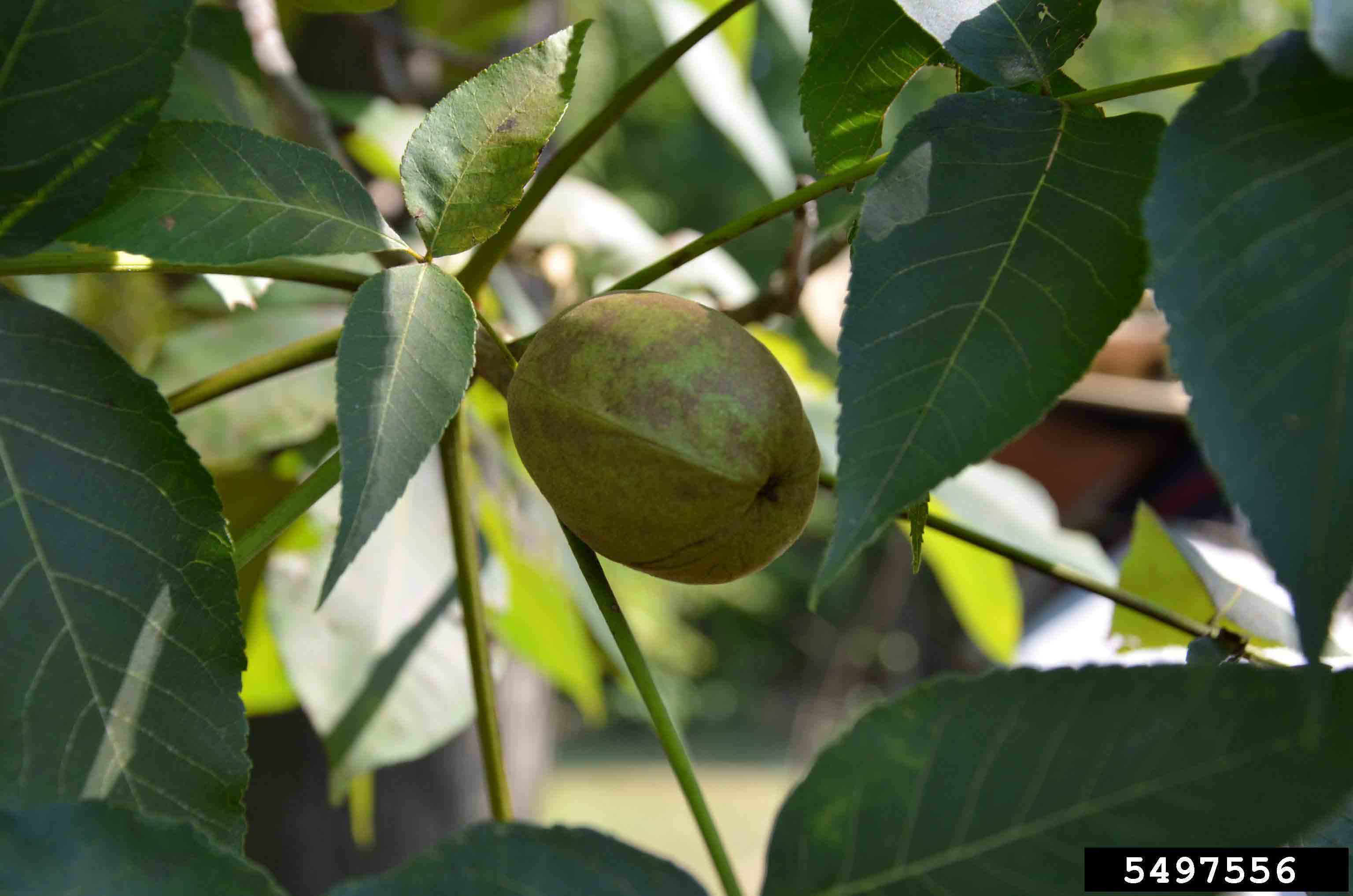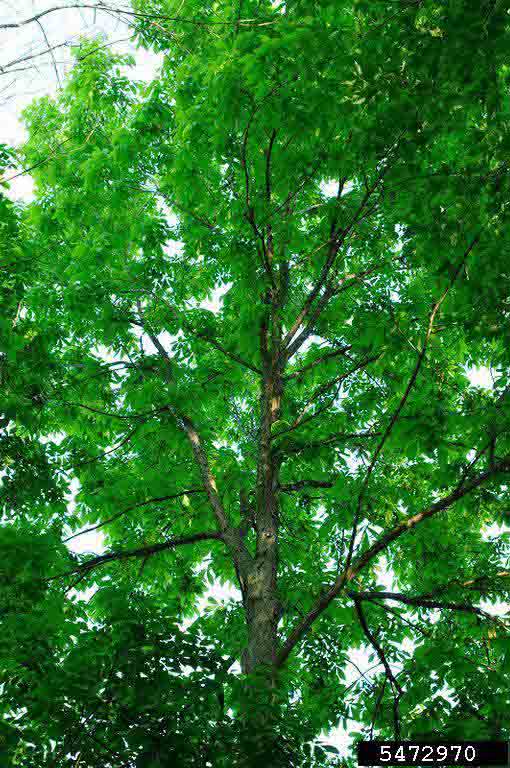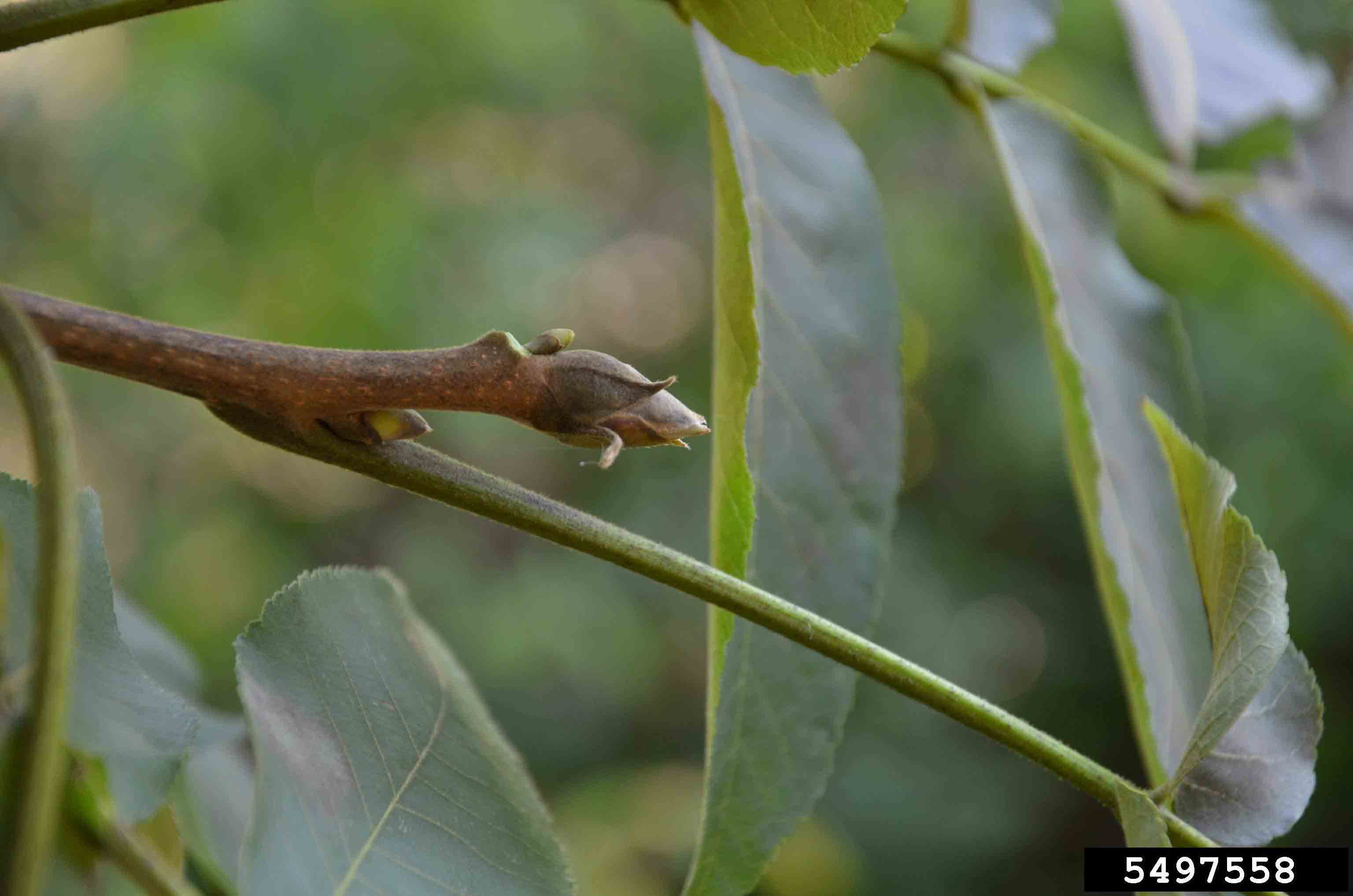Arkansas Tree Database
Shellbark Hickory
Shellbark Hickory
Scientific name:
Carya Laciniosa
Size:
100' tall
Leaves:
alternate, odd-pinnately compound, 15"-22" long with 7-9 (rarely 5) toothed leaflets, frequently persisting on tree into the winter
Flowers:
inconspicuous
Fruit:
very large (largest of all hickories), heavy-husked, nearly round; nut angled, flattened, heavy-shelled with tasty edible kernel
Fall Interest:
yellow-brown; deciduous
Culture:
sun to partial sun; deep, fertile, moist to wet soil
Disease/Insect:
Use:
moth host plant, such as for the luna moth and the regal moth whose caterpillar is called hickory horned devil; heavy, hard, tough, strong wood for tool handles, construction, furniture; inner bark used by Native Americans and settlers for cane work such as baskets
Cultivars:
Notes:
bark light gray and separating into long strips only slightly attached, with the ends usually straight rather than curving away from the trunk, providing roost sites for some bats; native to Arkansas
Resources:
Click thumbnail to enlarge images
